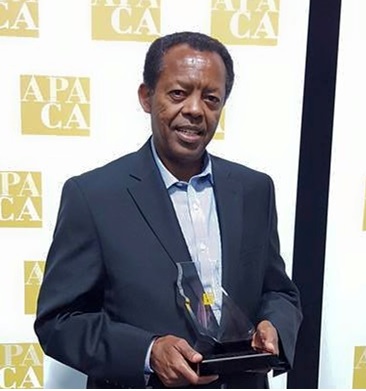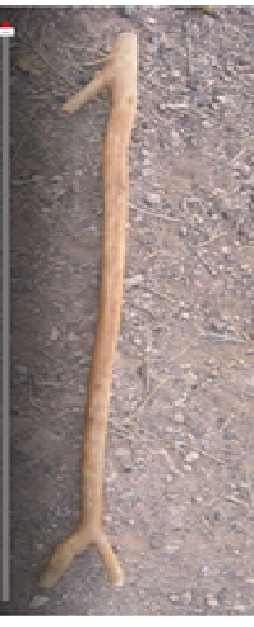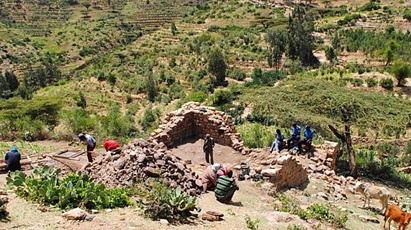September 6, 2020
By Adan Makina
Faisal Roble has been a friend and a brother for a long time, and since then our common interests and feelings of confidence continued to blossom non-stop. Our passion for writing made us strong philosophical and ideological brothers, and to this day no conceivable obstacles prevent us from discharging our literary responsibilities to the cause of humanity. Having followed his writings for all those years, the targeted gross weights of criticisms and praises by people of divergent ideologies remain uncountable. Taking note from my years of observing his behavioral mannerisms, the internationally acclaimed prolific and influential writer is not the type that harbors grudges.

Undoubtedly, Faisal is a reputable humanitarian and civil rights activist, a political analyst with a wide array of advanced psychobiography of global phenomenal confirmations affecting our world and a man with a good grasp of modern leadership qualities as well as debilitated leadership ineptitudes that undermine human growth and progress. ” My formative years were shaped by a good dose of early exposure to radical political ideas and the unending fight against injustice no matter who is at the helm of the commission of it.” Faisal told WardheerNews for their recognition of 2016 person of the year.
In fact, his character could be equated to the most misunderstood Somali ‘Hangool’ whose real definition is ambition (Han) and gool (lioness). Like the ambitious lioness that is protective of its cubs more than the ‘aar’ (male lion), Faisal does not shy away from telling the truth when tempted to hit the nail on the head.

A graduate of the University of California, Los Angeles (City of Angels in Spanish), Faisal has been the Principal City Planner in the City of Los Angeles for the last five years, and has been a recipient of top medals, international awards, letters and certificates of appreciations.
Started as a Planning Assistant right after he graduated from UCLA prestigious Graduate School of Architecture and Urban Planning (GSAUP), prior to that a B.A. in Geography from the one institution that is close to his heart – Lafole College – Faisal reached the highest position in the City’s civil service ranks. In 2015, he became the first Black to earn the position of Principal City Planner. Beyond this rank, General and Deputy General managers are only by appointments. Now that he is appointed to the Chief Equity Officer his story is worth retelling to our young professionals.
Established over hundred years ago, the City Planning Department of Los Angeles with its still growing 450 employees is the largest Planning Department in the United States.
It is worth noting that the City of Los Angeles, with a metropolitan population of over 14 million according to the last census conducted this year, is also the largest city in California and the second in the United States after New York City. Unlike in corruption-ridden Africa and many other countries in Asia and South America, for one to be entrusted with such a great responsibility, requires hard work, dedication, and visible accomplishments. Faisal has carefully navigated a highly political and racial environment to achieve his professional goals.
As from the 22nd of June of this year, profoundly determined Faisal Roble, after tough deliberations by his higher authorities, unanimously agreed to entrust him with the positions of Chief Equity Officer (CEO) to responsible for Equity, Racial Justice, Economic Development and Reconstructive Planning. He will be responsible for coming up with a Reconstructive Plan to be used as a five-year budget plan for 2020-2025. The position requires one to be an exemplary figure having the will and strength to deliver genuinely acceptable and the necessary budget without any inconsistencies. As this piece goes to publication, Faisal has successfully submitted his first draft of Action Plan to the Mayor Office.
The Office of Racial Justice, Equity, and Restorative Planning is the main foundation office to oversee upper mobility, curtail racial discrimination and promote diversity as wells social and economic equanimity. Moreover, this office will reorient the hundred years racialized planning paradigm and practices from one that contributed to disparity of the city’s 35 community plans area to a new approach of promoting equity and social justice from the perspective of urban design, housing, mobility, and economic opportunities for people of color.
With California being the largest economy in the United States and the fifth in the world, Faisal will have to surround himself with remarkable and reliable working partners. The office of Racial Justice, Equity, and Reconstructive Planning will be responsible for correcting what went wrong with the city since 1920. And that is not a small feat. In other words, a new planning approach to urban development that reimagines how our cities equitably grow will be the focus for Faisal’s new responsibility.
Economic Development and Reconstructive Planning both deal with the factors that diminish human growth and development. To attain economic equilibrium, these two branches of planning will have to work with the major sustainers of employment opportunities in the region, such as the Los Angeles Airport (LAX), industries, LA ports, and other business enterprises and partners. It was during the turbulent era that followed the civil war when President Andrew Johnson fought vigorously to envisage the Reconstruction Act of 1867 that propelled the newly enfranchised blacks to have a voice in government even though the rise of the Ku Klux Klan regained supremacy in the south.
Faisal’s elevation, if effectively managed, could catapult marginalized communities such as African Americans and Latinos and others to greater heights. An Americanized immigrant from impoverished, war-ravaged and beleaguered Somalia in the Horn of Africa, Faisal’s vision, talent and his relentless aspiration to change things for the better in the planning of the City of Los Angeles kicked-off the first day he got hired. Despite the prevailing economic, social, and educational disparities among the assortments of communities from around the world, the newly appointed CEO for Racial Justice and Equity prides to have knowledge beyond the scope of many struggling immigrants.
In addition to thirty years of professional planning experience, he has graduate degrees in Regional and Urban Planning as well as in Afro-American Studies with emphasis on Urban Political Economy. Inclusivity for Black, Indigenous and People of Color (BIPOC) and the observance of commitment to equity, diversity, and structured composition of all people without regard to disabilities, abilities, and health care needs will require his utmost attention. Borrowing a leaf from the adage, “where there is a will there is a way”, as long as Faisal remains on the helm in this new position, with the support and encouragement of his workmates, the City of Los Angeles will hopefully experience tremendous equitable growth in the near future. Congratulations Faisal and may Allaah help you in your future endeavors.
On the material day of Faisal’s presentation to a select City Council panel, he gave a brief biography of himself and an introduction of the prevailing political conditions in the United States especially the killing of the innocent 46 years old African American George Floyd who was intentionally suffocated by police officer Derek Chauvin in Minneapolis on May 25, 2020.
Faisal said, “I am PROFOUNDLY HONORED to serve the City in this capacity. As mentioned, I arrived at the City Planning Department about thirty Years ago. I was here in 1992 when the civil unrest, also known as the Rodney King unrest, took place. I am here now when the nation is gripped by the gory murder of George Floyd in Minneapolis. The phenomena of killing Black men and women by police forces who were supposed to protect them is as American as apple pie.”
“Thanks to the millions of citizens in this country and elsewhere, we have been awakened to a systemic and structural racism that permeates in all our civic life. Some of us not only knew about such a systemic racism in our society that thrives under the rug, but we have experienced and lived through it both inside and outside our workplace.”
Faisal went on to tell the select Council Committee that “It is within this context that I accept this appointment and look forward to critically assessing past practices, and whether the City departments have provided safe, enriching, and nurturing workplace to Blacks and to People of Color. As the Chief Equity Officer, I will be responsible to ENSURE RACIAL JUSTICE, CREATE SAFE WORKPLACE for BLACKS and for COMMUNITIES OF COLOR (COC).”
In addition to the national and regional interviews he has given thus far, Faisal will be a guest speaker at the prestigious University of Southern California (USC) Annenberg School of Communication to talk about his vision for Los Angeles. Faisal, you have been through all those specifications and you still have a lot of obstacles ahead of you. Keep up the good work and let us know how your new responsibility works out as you go forward navigating your modern world. One last request: can you Faisal please publish your powerful presentation to the Council so that our young generation may get a healthy dose of encouragement?
Adan Makina
WardheerNews
Email: adan.makina@gmail.com




